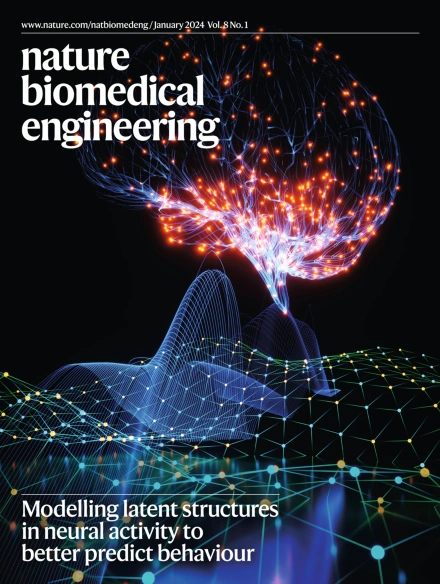Engineering a macromolecular JAK inhibitor for treating acute inflammation and endotoxaemia.
IF 26.8
1区 医学
Q1 ENGINEERING, BIOMEDICAL
引用次数: 0
Abstract
Uncontrolled and sustained inflammation is inextricably associated with the pathogenesis of numerous diseases. However, there is still demand for effective and safe anti-inflammatory therapies. Here we report a potent anti-inflammatory macromolecular therapy named HPL, created by conjugating polyethylene glycol and luminol onto a multivalent and hydrolysable cyclic structure. Leveraging its amphiphilic nature, HPL can spontaneously self-assemble into micelles capable of targeting inflamed tissues and localizing in inflammatory cells. In mice with acute lung, kidney and liver injuries, as well as endotoxaemia, HPL shows anti-inflammatory effects that rivals or surpasses those of two commonly used anti-inflammatory drugs. HPL micelles can act as bioactive and inflammation-responsive carriers for site-specific delivery to release anti-inflammatory drugs. Mechanistically, HPL exerts its anti-inflammatory activity mainly by inhibiting the IL-6/JAK2/STAT3 signalling pathway. HPL shows favourable safety profiles in mice at doses at least 5-fold higher than those used in therapeutic studies. These findings suggest that HPL holds great promise as a highly potent, cost-effective and safe JAK2 inhibitor for treating various diseases associated with inflammation.设计用于治疗急性炎症和内毒素血症的大分子JAK抑制剂。
不受控制和持续的炎症与许多疾病的发病机制密不可分。然而,仍然需要有效和安全的抗炎疗法。在这里,我们报道了一种名为HPL的有效抗炎大分子疗法,它是通过将聚乙二醇和鲁米诺偶联到多价可水解的环结构上而产生的。利用其两亲性,HPL可以自发地自组装成能够靶向炎症组织并定位于炎症细胞的胶束。在患有急性肺、肾和肝损伤以及内毒素血症的小鼠中,HPL显示出与两种常用抗炎药相当或超过的抗炎作用。HPL胶束可以作为生物活性和炎症反应载体,用于部位特异性递送释放抗炎药物。机制上,HPL主要通过抑制IL-6/JAK2/STAT3信号通路发挥其抗炎活性。HPL在小鼠中显示出良好的安全性,剂量至少比治疗研究中使用的剂量高5倍。这些发现表明,HPL作为一种高效、经济、安全的JAK2抑制剂,有望治疗各种与炎症相关的疾病。
本文章由计算机程序翻译,如有差异,请以英文原文为准。
求助全文
约1分钟内获得全文
求助全文
来源期刊

Nature Biomedical Engineering
Medicine-Medicine (miscellaneous)
CiteScore
45.30
自引率
1.10%
发文量
138
期刊介绍:
Nature Biomedical Engineering is an online-only monthly journal that was launched in January 2017. It aims to publish original research, reviews, and commentary focusing on applied biomedicine and health technology. The journal targets a diverse audience, including life scientists who are involved in developing experimental or computational systems and methods to enhance our understanding of human physiology. It also covers biomedical researchers and engineers who are engaged in designing or optimizing therapies, assays, devices, or procedures for diagnosing or treating diseases. Additionally, clinicians, who make use of research outputs to evaluate patient health or administer therapy in various clinical settings and healthcare contexts, are also part of the target audience.
 求助内容:
求助内容: 应助结果提醒方式:
应助结果提醒方式:


